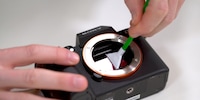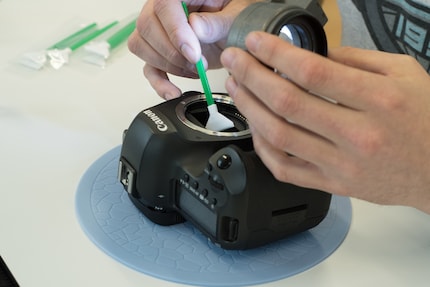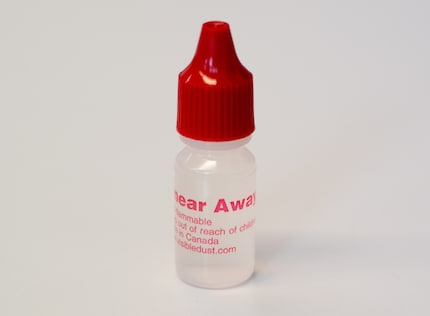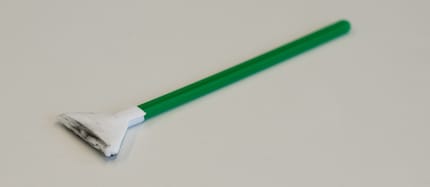
Guide
Marks on your camera sensor – how to get rid of them
by David Lee
We had to face the facts: cleaning your camera's sensor yourself is not as easy as it sounds. So we called in a professional, who gave us some advice.
You may recall that a while back I described my attempt to clean a sensor. I managed to remove most of the stains, while others were particularly stubborn. After using about half the swabs, I realised I was wasting too much material for the little progress I was making.
As the result wasn't entirely satisfactory, video producer Manuel Wenk and I decided to call in a professional. We asked him to explain how he goes about it and what he pays attention to. Tino Scherer, from Light + Byte (in German) is not only competent, but also very educational.
During cleaning, the device holds the mirror up (if it has one) and the shutter open, which requires power. However, when the battery runs out, the appliance closes before switching off. If you're still working, you risk damaging the closure. You can say goodbye to your camera. As a rule, Tino only cleans fully charged cameras.
He considers thorough and repeated blowing to be an essential step, because the dust that accumulates inside the camera sooner or later ends up on the sensor. It sometimes even settles there already during wet cleaning with the 'swabs', which will then have served no purpose.
Tino uses compressed gas as much as he can, or a bellows when he's out and about and doesn't have any spray available. He only uses the bellows that don't suck up any dust.
Be careful when using compressed gas: always hold the bottle vertically, with the spray facing downwards. Otherwise, the gas may come out in liquid form at times, which the sensor won't like. Using a compressed air compressor is a very bad idea, as the air is not clean.
Instead of taking a snapshot after each cleaning step to check the results, as I would have done, Tino uses a special magnifying glass with LEDs that illuminates residual dirt straight away (shown in the video above). It is fitted directly onto the bayonet-type lens mounts of full-frame SLRs. On mirrorless cameras, the gap is smaller. Tino therefore has to raise the magnifier a little so that the sensor is in focus.

These kinds of magnifiers don't come cheap. And honestly, the price of swabs is exorbitant. VDust has obviously patented them; he doesn't really have any competitors. According to Tino, everyone in the industry uses them, even camera manufacturers. An anti-static mat is also one of his basic tools.
If you only occasionally clean your camera, entrusting the job to a pro is a good solution. Light + Byte charges CHF 59 for this service, or CHF 69 for full-format cameras.
Despite all his knowledge and experience, Tino sometimes also uses a lot of swabs in a single cleaning session. Here I am reassured. On average, three go through, but he can go up to ten in extreme cases, especially when there are greasy deposits. There's also a special liquid for these delicate situations. It's called Smear Away, and it's - obviously - marketed by Visible Dust. We don't (yet) have it in our shop.

Swabs cannot be used more than once on the sensor, but they can be re-used on other parts, especially the bayonet-type lens mount, which is often very dirty. Screwing the lens on and off creates abrasion particles. After a brief pass over the bayonet, the swab is quite black:

According to Tino, it's best to clean the lens mount, as dirt can come off it and get into the camera.
Also, the Sony camera I cleaned has a built-in image stabiliser, which causes the sensor to wobble a bit when a swab is passed. The sensor can't move on the Fujifilm X-T2 pictured here. I didn't feel it complicated the process hugely, but it still made a small difference.
If you follow Tino's advice, you'll be able to clean pretty much any sensor. You'll need a few tools, and as swabs are quite expensive, you won't save any money by doing the job yourself. Unless of course you clean your camera very often, because it doesn't have a mirror and you use it outdoors in difficult conditions.
My interest in IT and writing landed me in tech journalism early on (2000). I want to know how we can use technology without being used. Outside of the office, I’m a keen musician who makes up for lacking talent with excessive enthusiasm.
Practical solutions for everyday problems with technology, household hacks and much more.
Show all